Pálás in Galway takes arthouse cinema to the next level
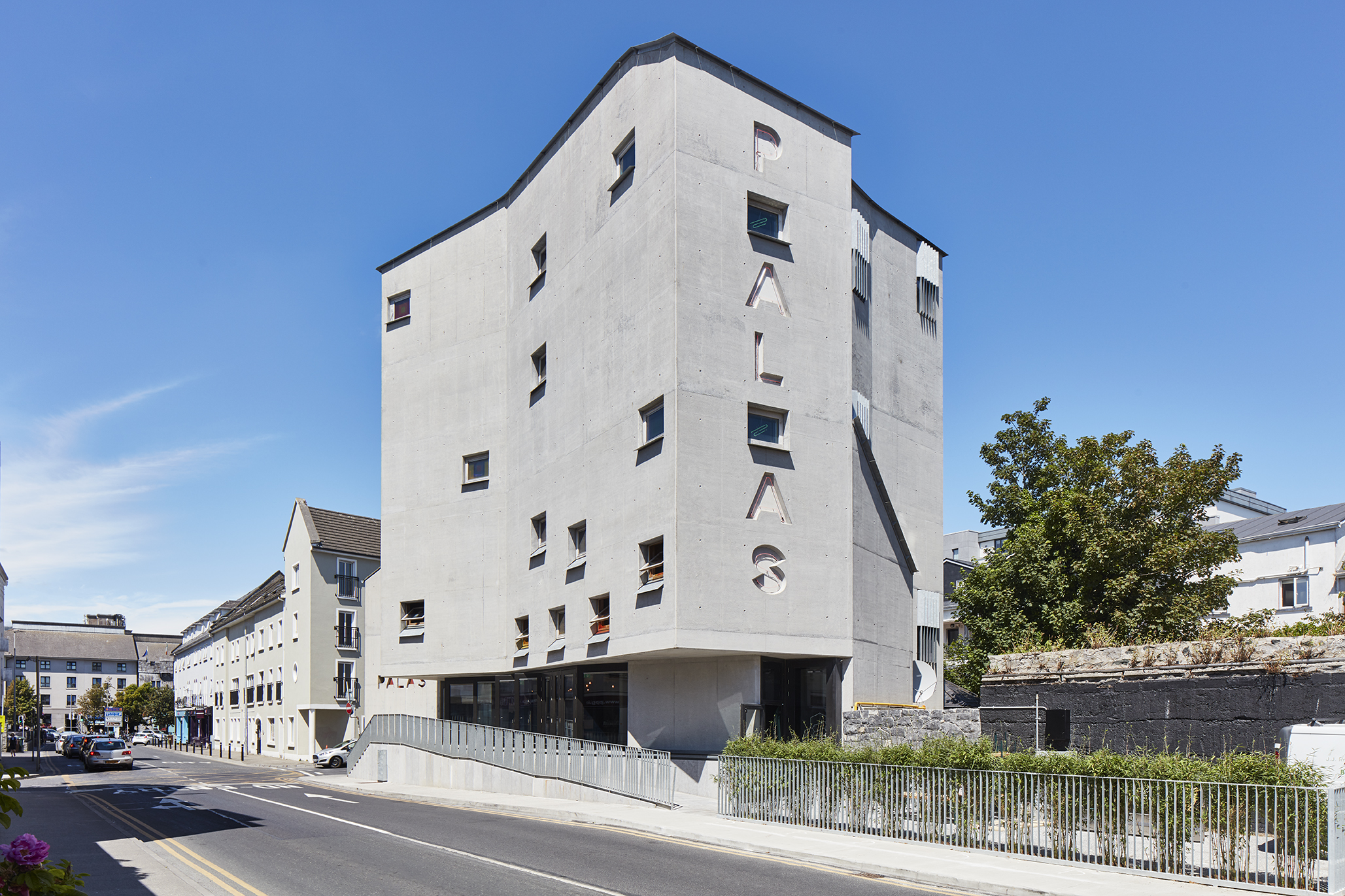
Some 14 years after the idea for a new arthouse cinema in the west Irish coastal town of Galway was initially proposed, and now with film producers Element Pictures (who also run Dublin’s Light House Cinema) firmly on board, Pálás Cinema (or Palace) has arrived. And, despite its long-drawn inception, it does not disappoint.
A contemporary moulded-concrete ‘tower house’ located in the city’s so-called Latin Quarter, its somewhat austere exterior gives way to a dizzying interior layout of criss-crossing poured concrete stairs, nooks and passageways. In keeping with the 1820s merchant’s house that was formerly on the site, and whose façade has been recreated to house the ticket office, the spaces inside are domestic and welcoming in scale and contrast intriguingly with its monolithic appearance.
Architect Tom de Paor says he wanted the new Pálás Cinema to offer a contemporary reinvention of the west Irish vernacular of plain, powerful and solid limestone buildings or warehouses with small apertures and windows. To ‘soften the pill' he added ‘punky, decorative and Arts and Crafts' elements. Some of these are visible from the outside, such as the neon signs, the lettering spelling out the cinema’s name cast into the sides of the building and the 24 resin-coated window designs by late and renowned Irish artist Patrick Scott that reference the gel filters used in stage lighting. Stairwells, lobbies and rooms are bathed and dappled in red, amber, purple, green and yellow during the day as a result, and project playful light effects out into the city at night.
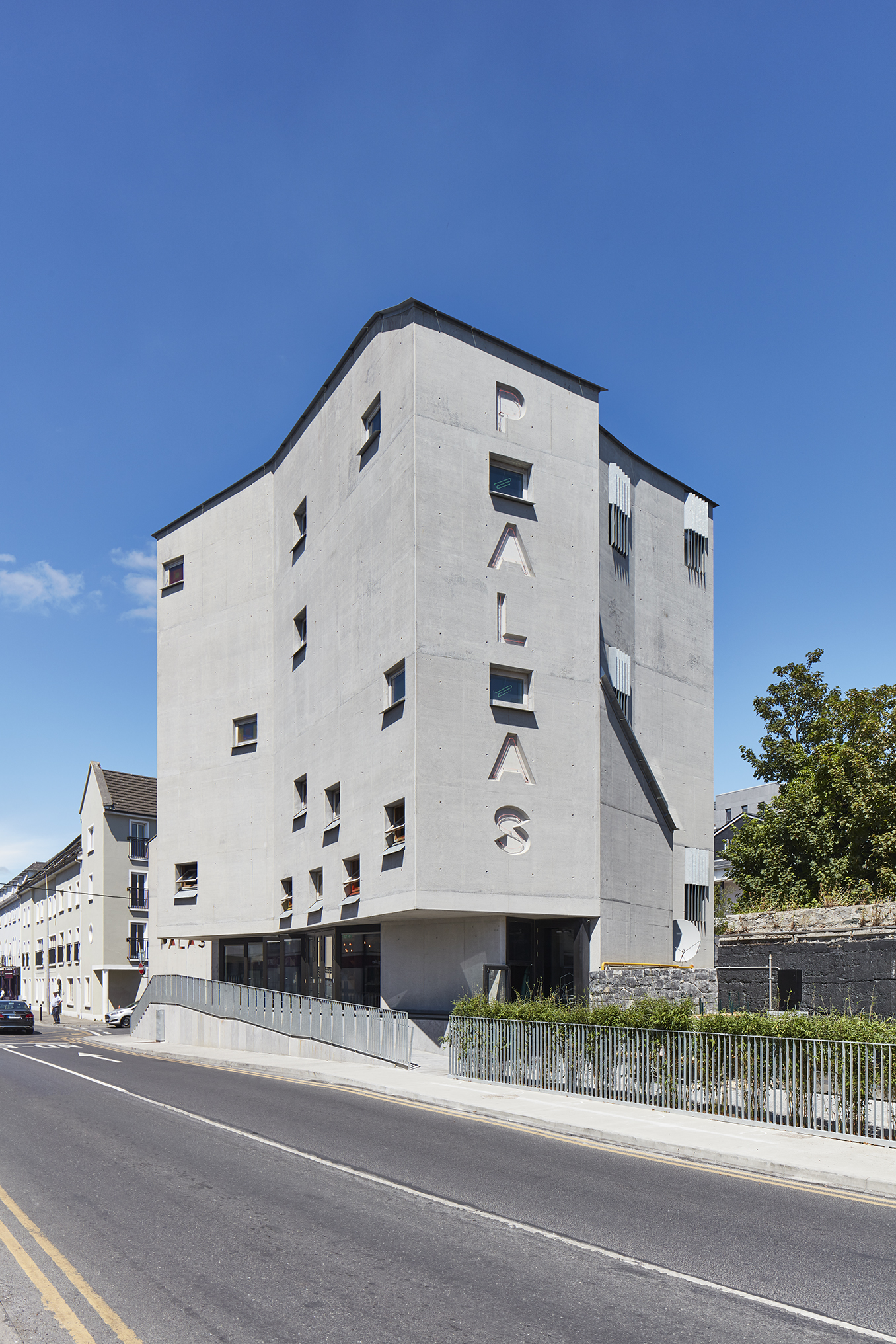
The cinema building’s moulded concrete form clearly stands out in its surroundings. Photography: Ed Reeve
In keeping with the more ‘dressed-up’ interiors ethos, the building’s three screens are also draped in sensuous red velvet on the ceilings and walls and filled with comfortable seating by historic French manufacturer Quinette Gallay. A ground-floor restaurant features leather banquette seating, marble-topped tables and an elongated chandelier by de Paor (who created all the fittings in the circulation spaces) made of stainless steel conduit and naked light bulbs. Meanwhile, the first floor bar is floored and lined with a luxuriant ebonised Sapele, the same timber used in the chamfered and beautifully detailed window frames throughout the building.
With its sober concrete exteriors, untempered circulation spaces and soaring voids, Pálás is architecturally quirky, brave, playful and provocative. Even de Paor admits to getting lost in it at times. But that is also the charm and trickery of it, one that makes the contrast with the hi-tech and plush cinema spaces all the more powerful.
Pálás is an unabashed attempt to make something contextual but new. Its managers hope it will become a much-loved hub for film lovers in a city already renowned for its film-making legacy and awarded UNESCO City of film status in 2014. Located on an important circulation axis into town, in a strategic gateway spot, de Paor’s building is a bold statement of intent.
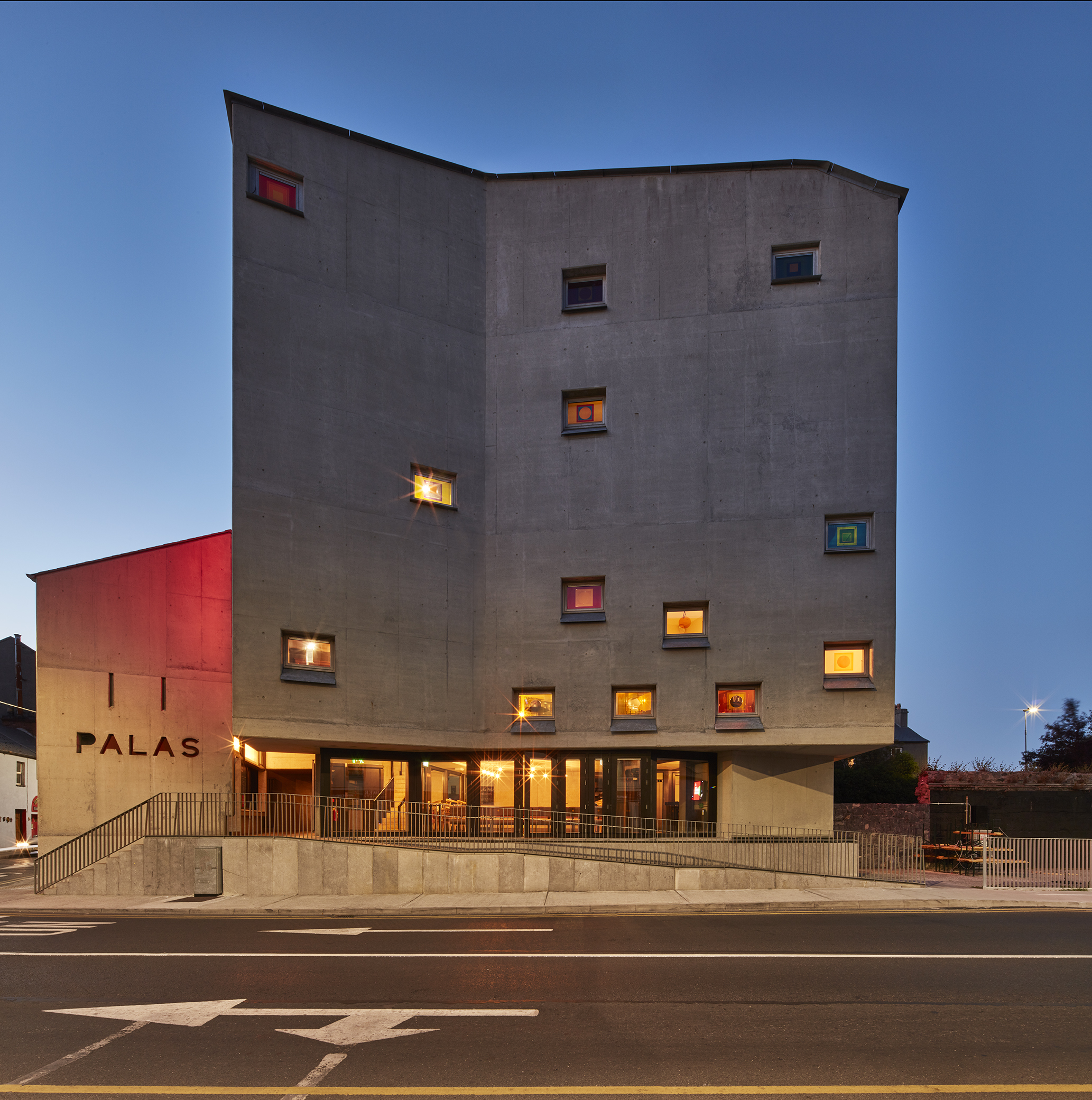
Led by Tom de Paor, the practice is based outside Dublin. Photography: Ed Reeve
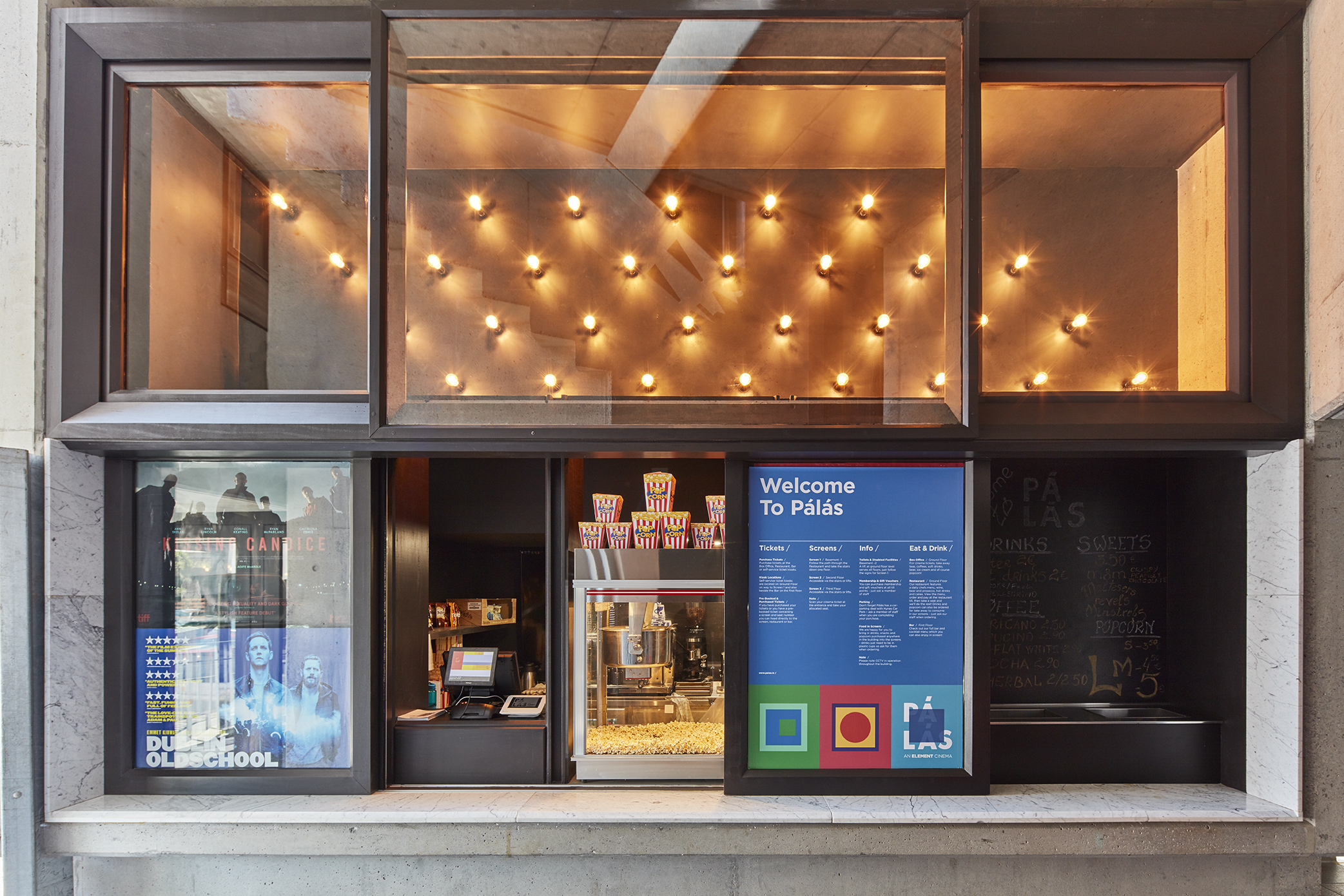
The new cinema is supported by film producers Element Pictures. Photography: Ed Reeve

It took about 14 years for the project to come to life. Photography: Ed Reeve
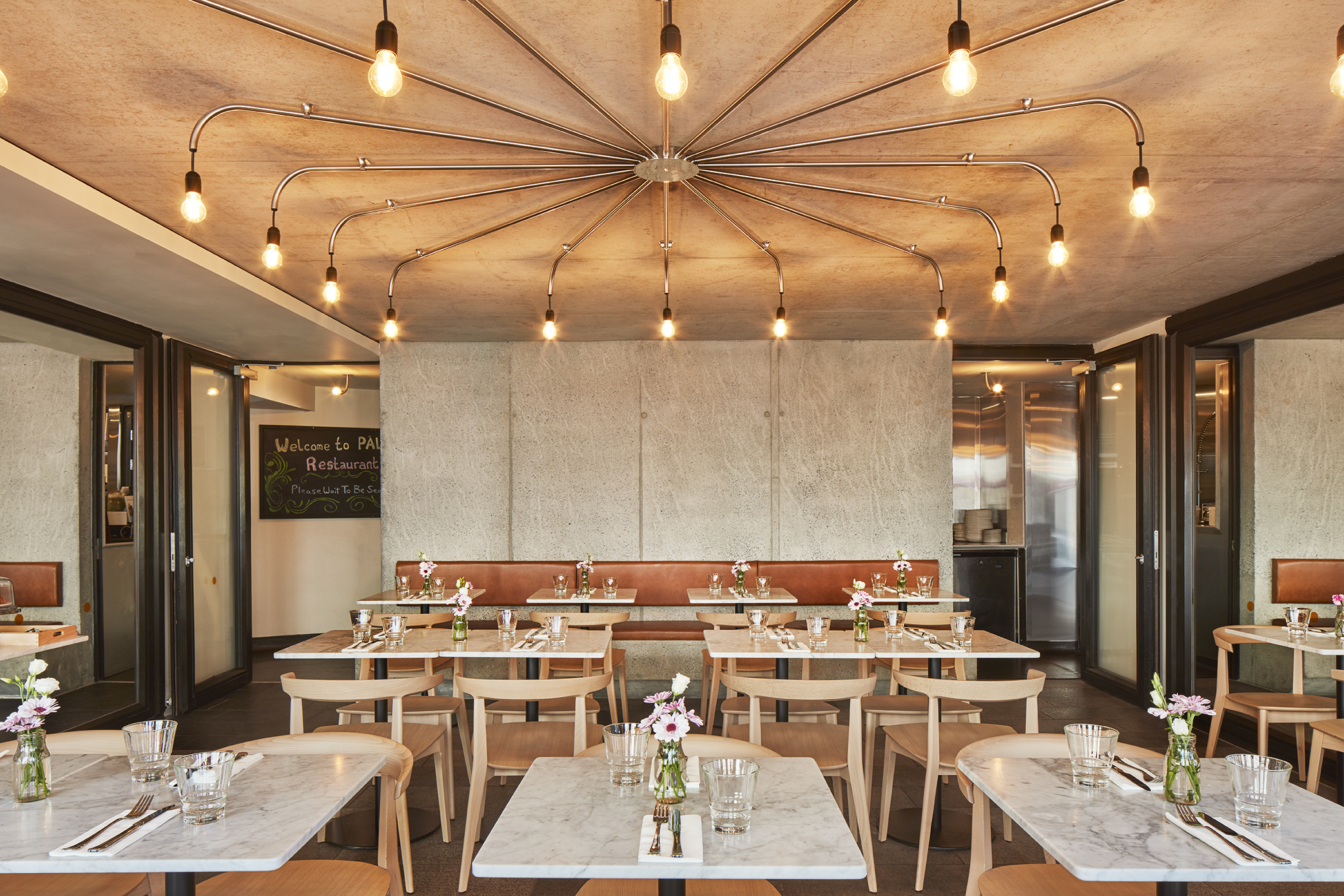
The austere exterior contains a variety of leisure facilities. Photography: Ed Reeve
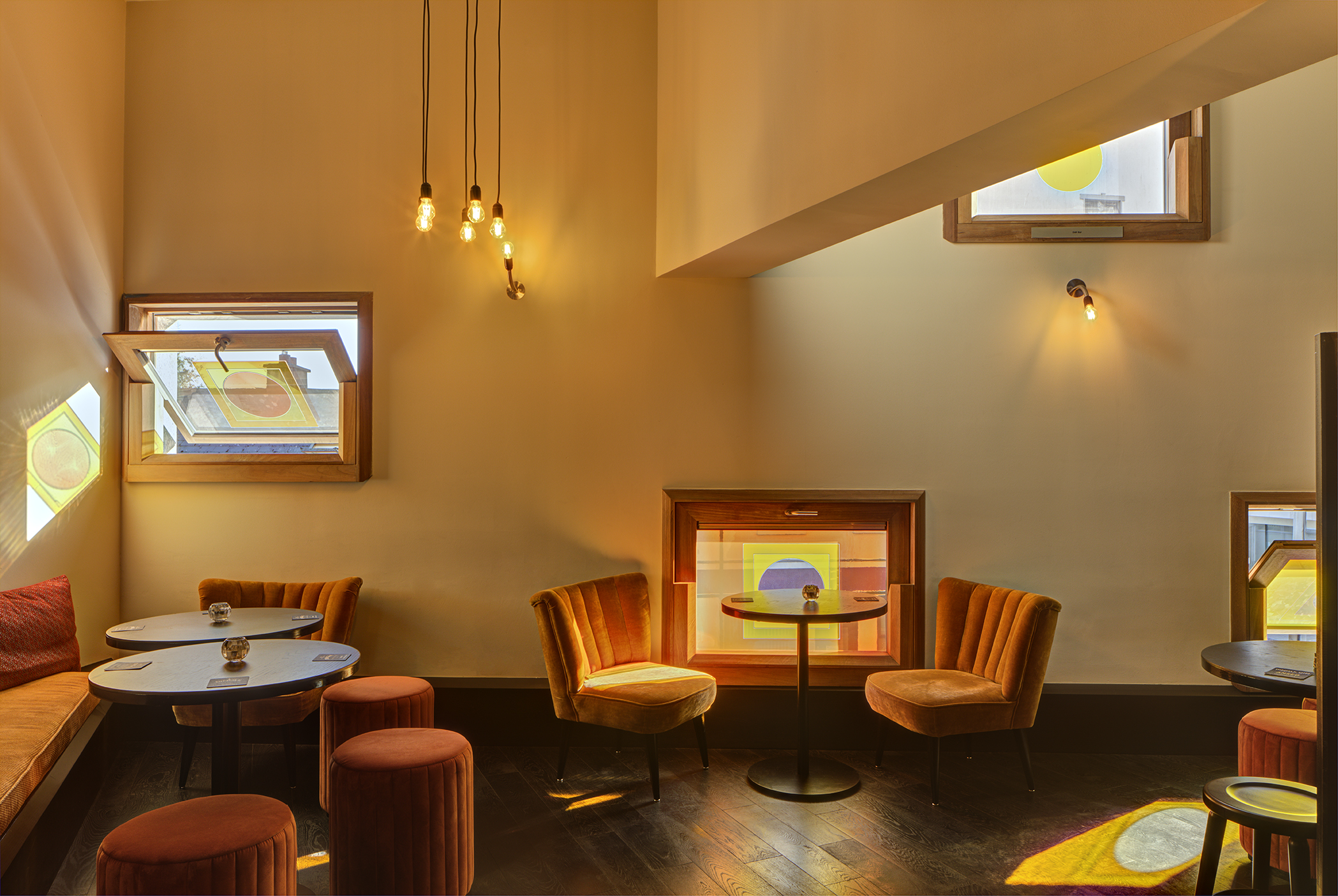
Interiors range in style and are often more domestic in scale and feel. Photography: Ed Reeve
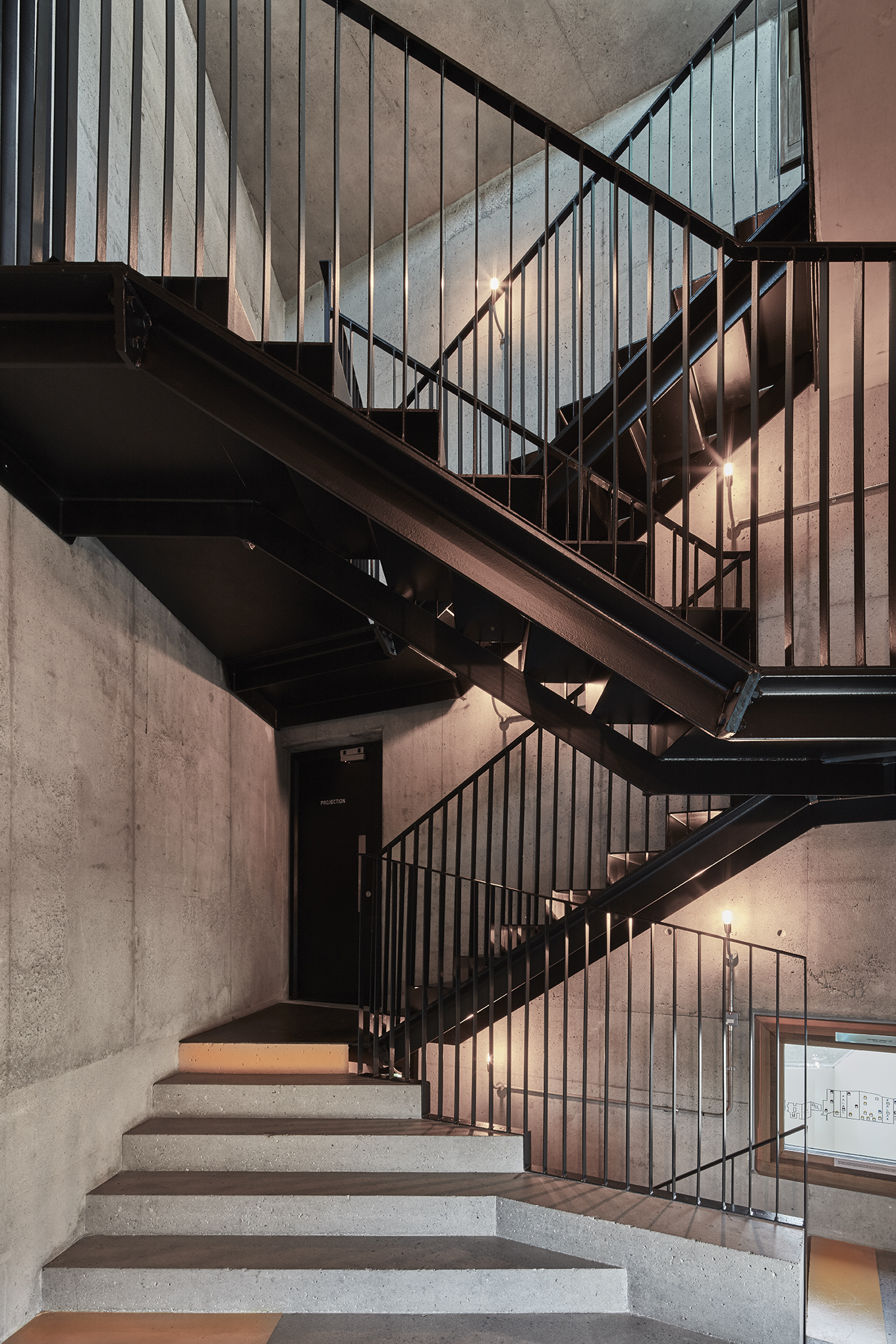
The sculptural exterior continues inside in several areas, such as the striking staircases. Photography: Ed Reeve
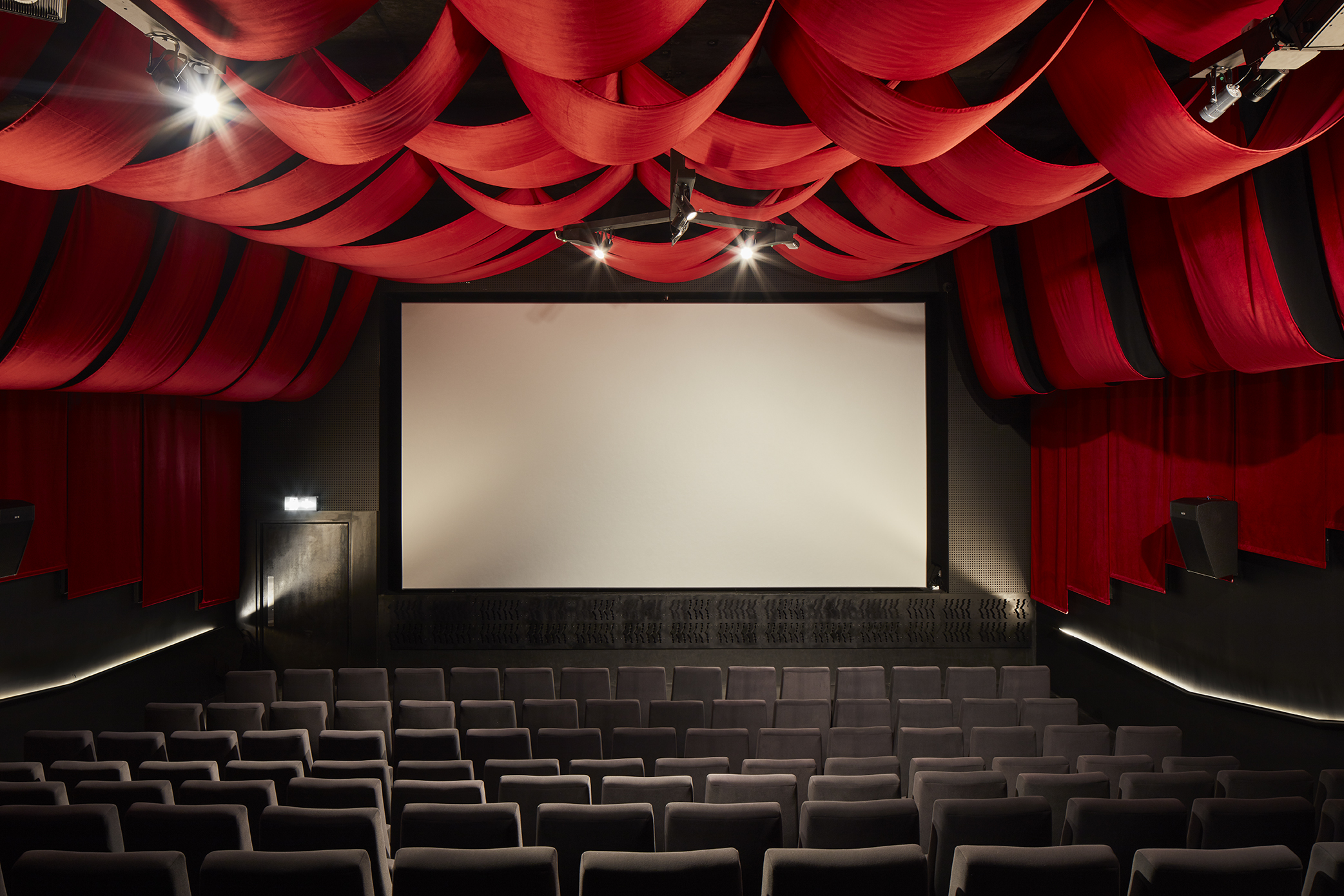
The building’s three screens are draped in sensuous red velvet on the ceilings and walls. Photography: Ed Reeve
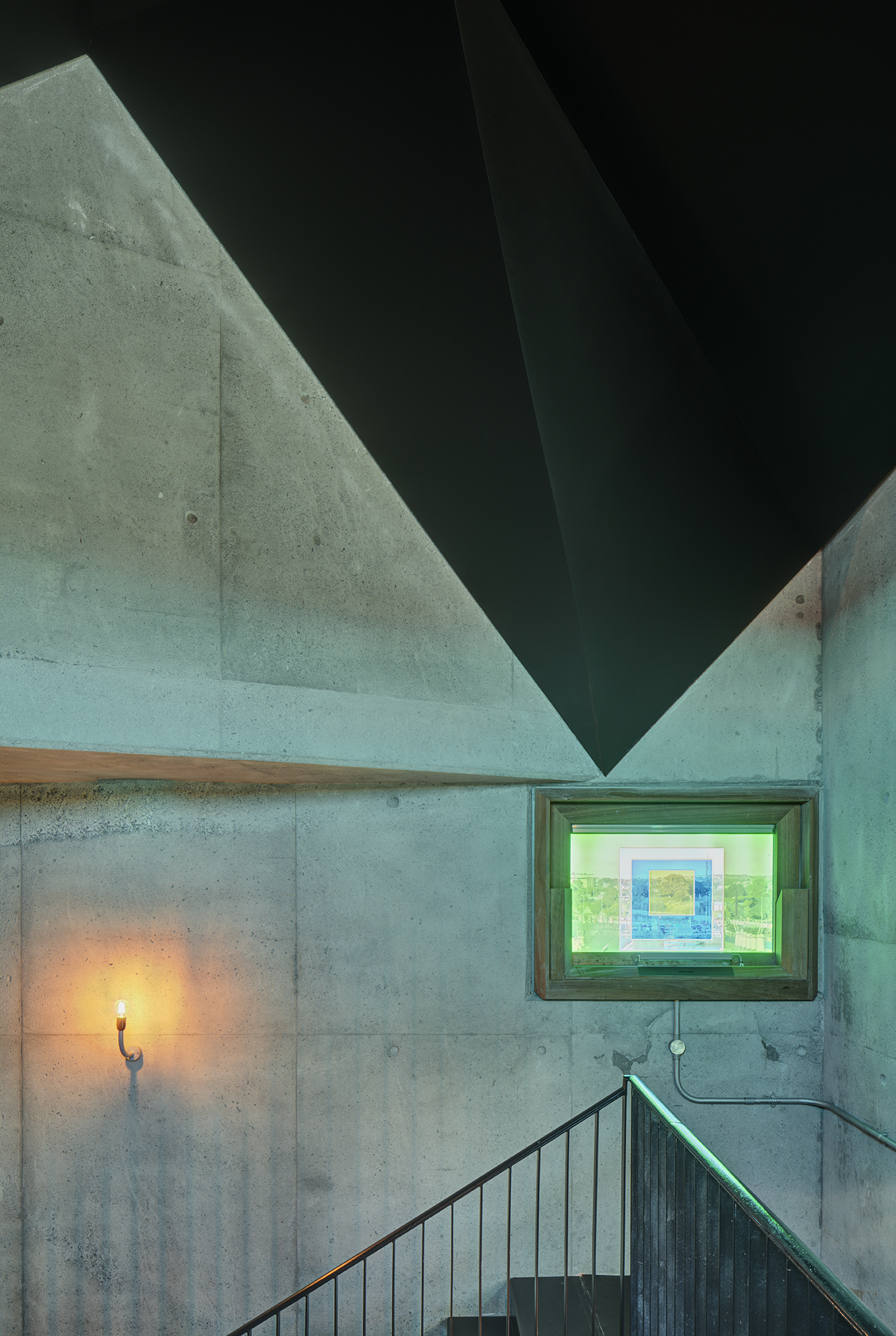
There’s also 24 resin-coated window designs by late renowned Irish artist Patrick Scott. They reference the gel filters used in stage lighting. Photography: Ed Reeve
INFORMATION
For more information visit the website of de Paor Architects
Wallpaper* Newsletter
Receive our daily digest of inspiration, escapism and design stories from around the world direct to your inbox.
Giovanna Dunmall is a freelance journalist based in London and West Wales who writes about architecture, culture, travel and design for international publications including The National, Wallpaper*, Azure, Detail, Damn, Conde Nast Traveller, AD India, Interior Design, Design Anthology and others. She also does editing, translation and copy writing work for architecture practices, design brands and cultural organisations.
-
 A Xingfa cement factory’s reimagining breathes new life into an abandoned industrial site
A Xingfa cement factory’s reimagining breathes new life into an abandoned industrial siteWe tour the Xingfa cement factory in China, where a redesign by landscape specialist SWA Group completely transforms an old industrial site into a lush park
By Daven Wu
-
 Put these emerging artists on your radar
Put these emerging artists on your radarThis crop of six new talents is poised to shake up the art world. Get to know them now
By Tianna Williams
-
 Dining at Pyrá feels like a Mediterranean kiss on both cheeks
Dining at Pyrá feels like a Mediterranean kiss on both cheeksDesigned by House of Dré, this Lonsdale Road addition dishes up an enticing fusion of Greek and Spanish cooking
By Sofia de la Cruz
-
 2025 Expo Osaka: Ireland is having a moment in Japan
2025 Expo Osaka: Ireland is having a moment in JapanAt 2025 Expo Osaka, a new sculpture for the Irish pavilion brings together two nations for a harmonious dialogue between place and time, material and form
By Danielle Demetriou
-
 Remembering Alexandros Tombazis (1939-2024), and the Metabolist architecture of this 1970s eco-pioneer
Remembering Alexandros Tombazis (1939-2024), and the Metabolist architecture of this 1970s eco-pioneerBack in September 2010 (W*138), we explored the legacy and history of Greek architect Alexandros Tombazis, who this month celebrates his 80th birthday.
By Ellie Stathaki
-
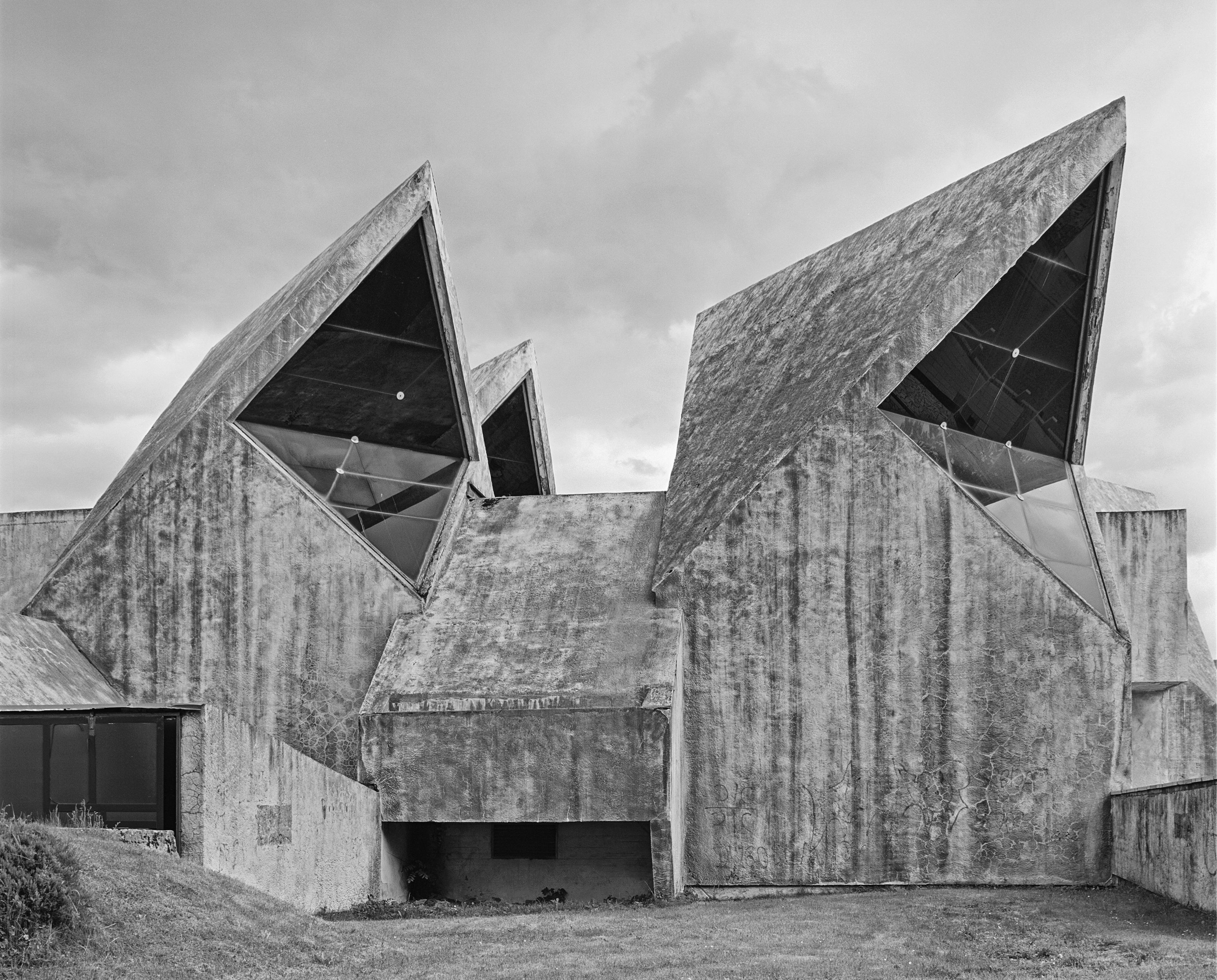 All hail the power of concrete architecture
All hail the power of concrete architecture‘Concrete Architecture’ surveys more than a century’s worth of the world’s most influential buildings using the material, from brutalist memorials to sculptural apartment blocks
By Jonathan Bell
-
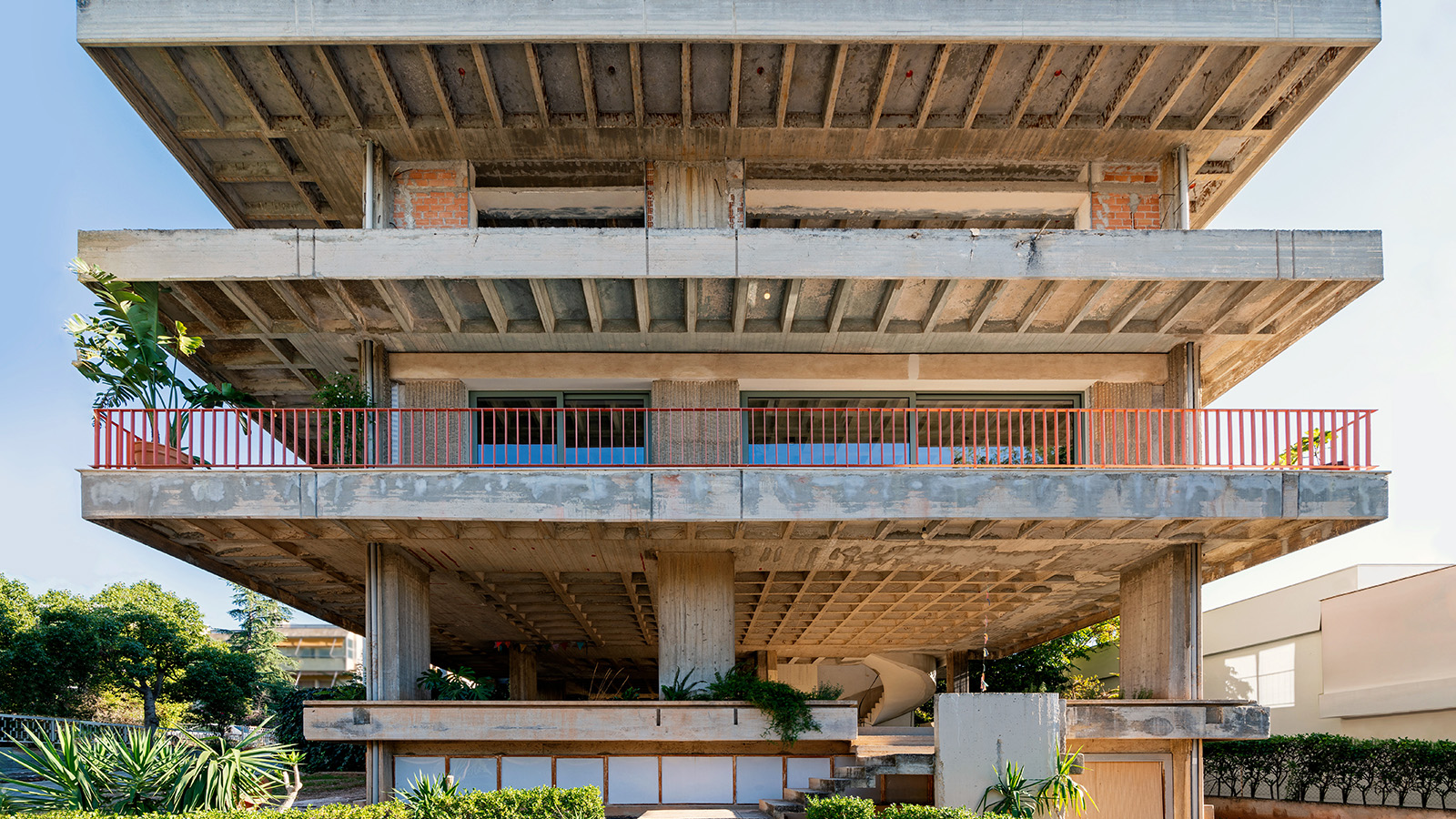 Three Object Apartment embraces raw concrete honesty in the heart of Athens
Three Object Apartment embraces raw concrete honesty in the heart of AthensThree Object Apartment by DeMachinas is a raw concrete home in Athens, which confidently celebrates its modernist bones
By Ellie Stathaki
-
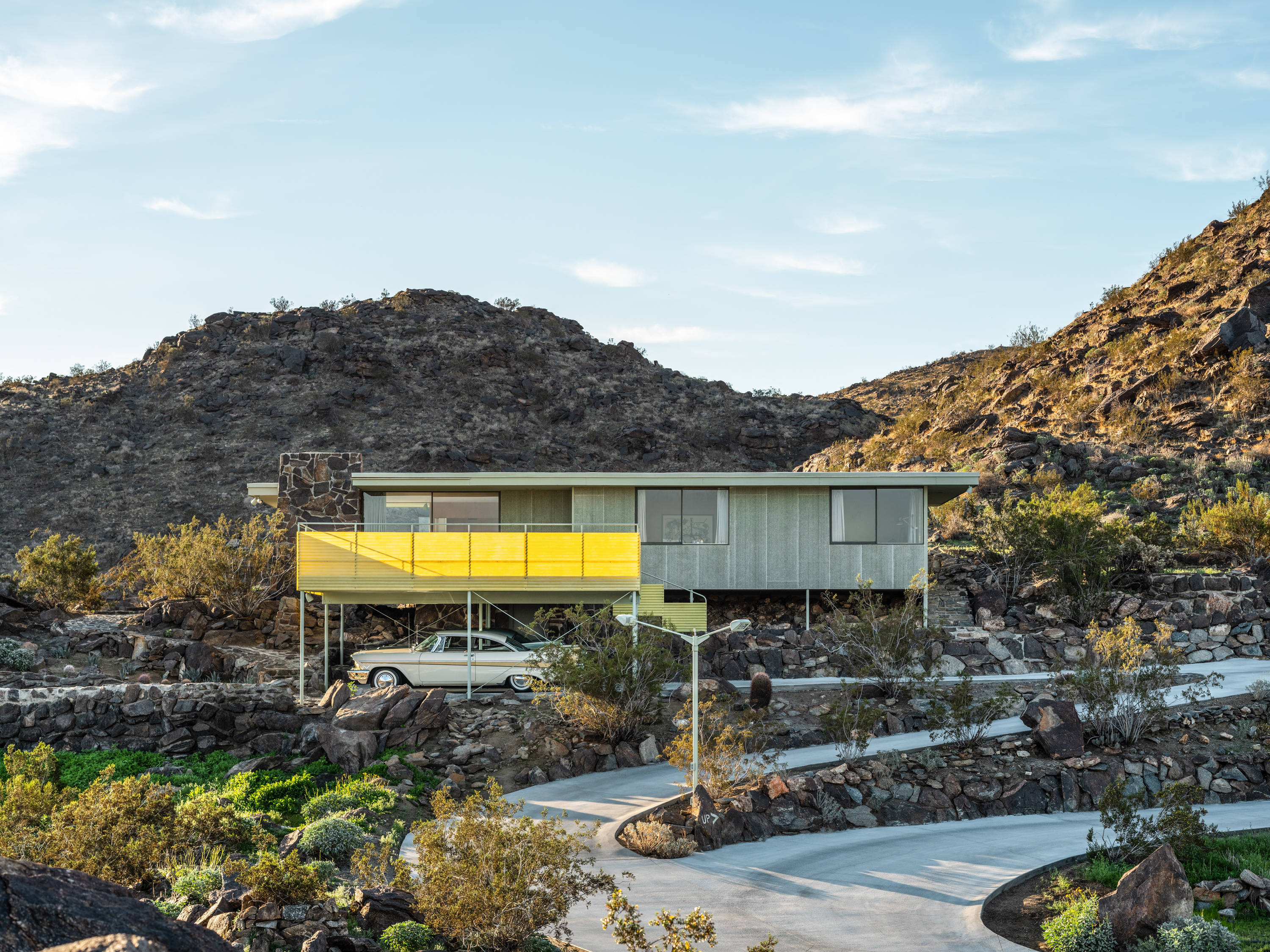 Modernist architecture: inspiration from across the globe
Modernist architecture: inspiration from across the globeModernist architecture has had a tremendous influence on today’s built environment, making these midcentury marvels some of the most closely studied 20th-century buildings; here, we explore the genre by continent
By Ellie Stathaki
-
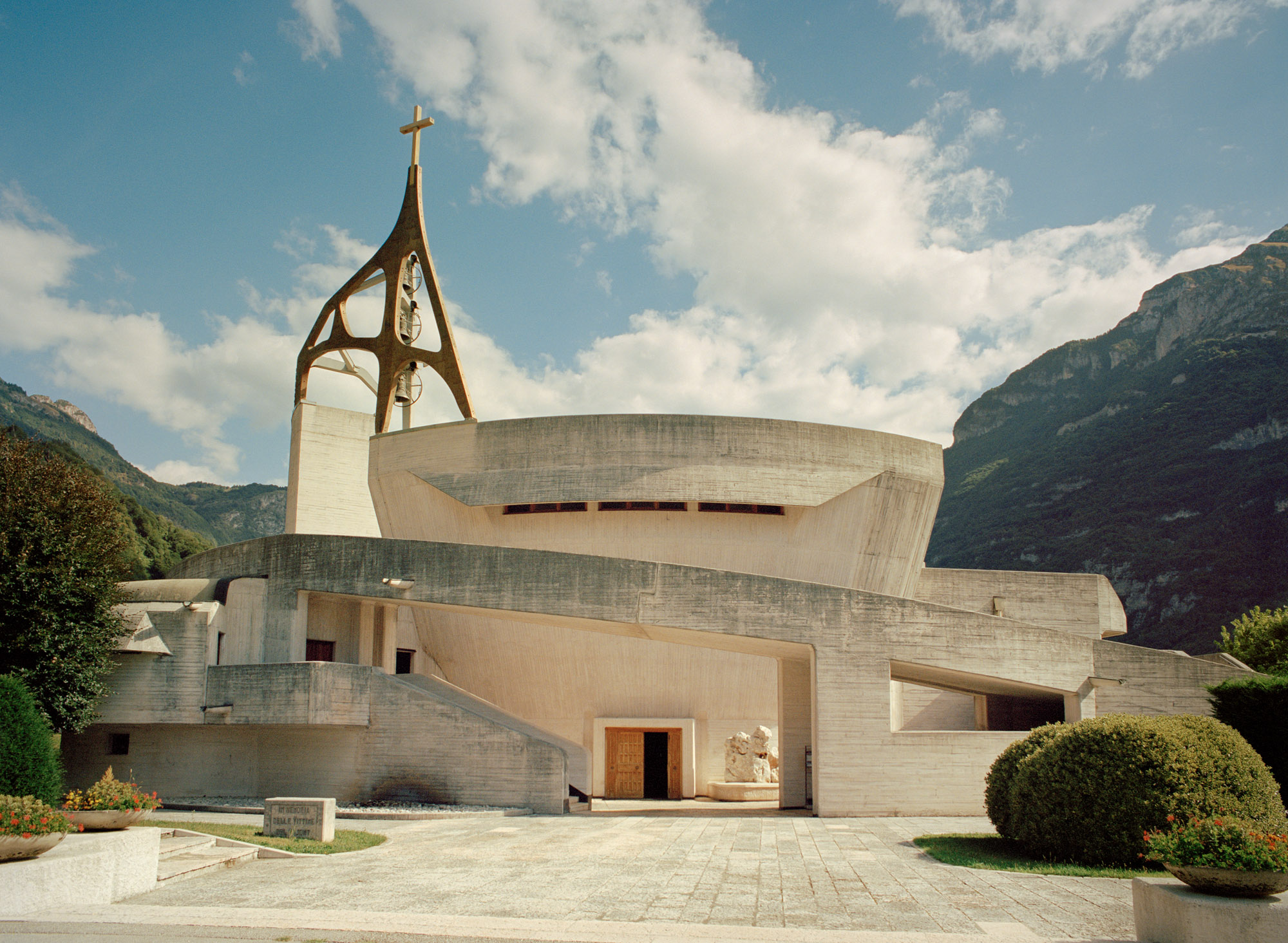 Giovanni Michelucci’s dramatic concrete church in the Italian Dolomites
Giovanni Michelucci’s dramatic concrete church in the Italian DolomitesGiovanni Michelucci’s concrete Church of Santa Maria Immacolata in the Italian Dolomites is a reverently uplifting memorial to the victims of a local disaster
By Jonathan Glancey
-
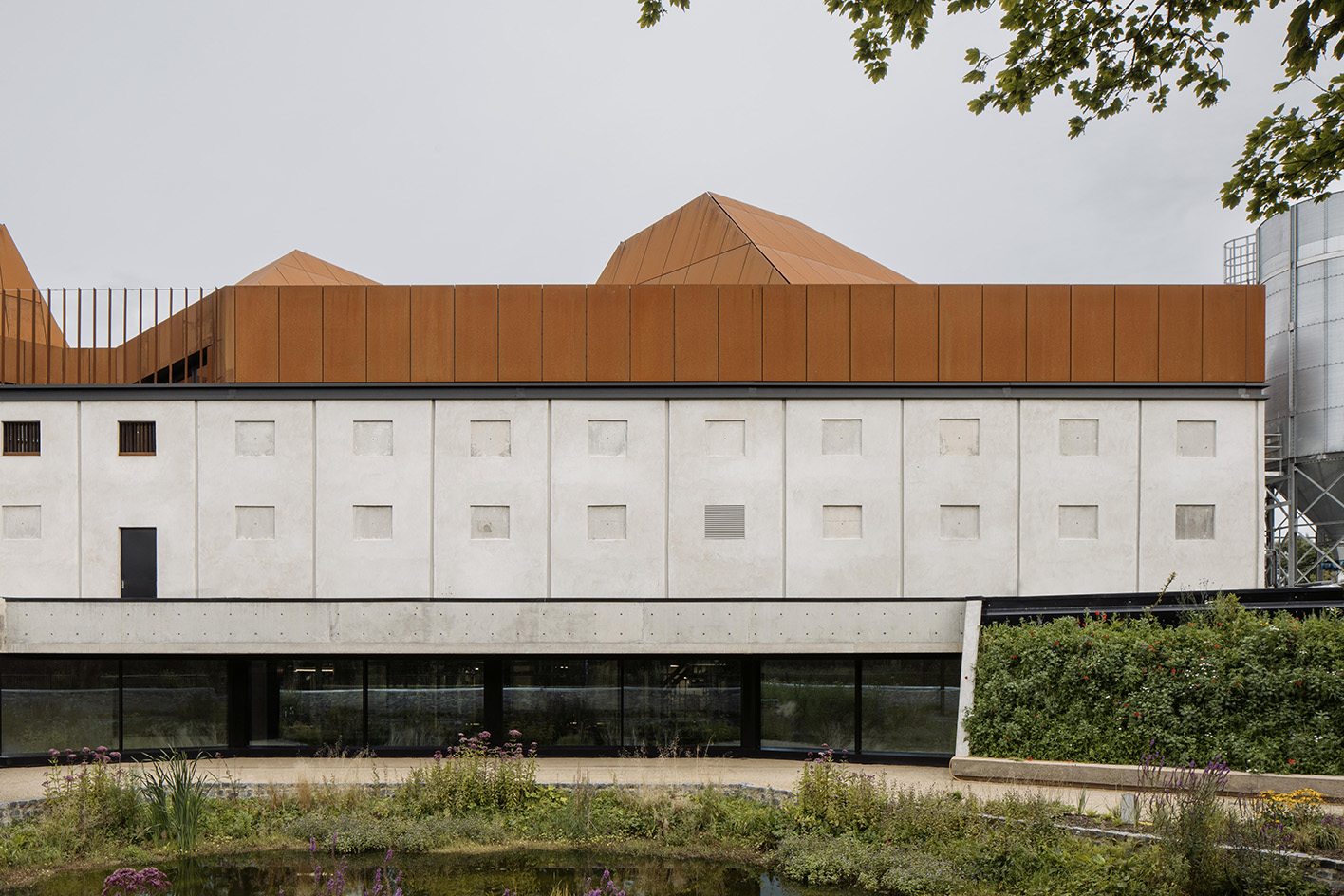 Step inside the spirit world of Church of Oak's headquarters in Ireland
Step inside the spirit world of Church of Oak's headquarters in IrelandNew Irish whiskey brand Church of Oak gets a headquarters with a strong identity designed by boutique studio ODOS Architects
By Ellie Stathaki
-
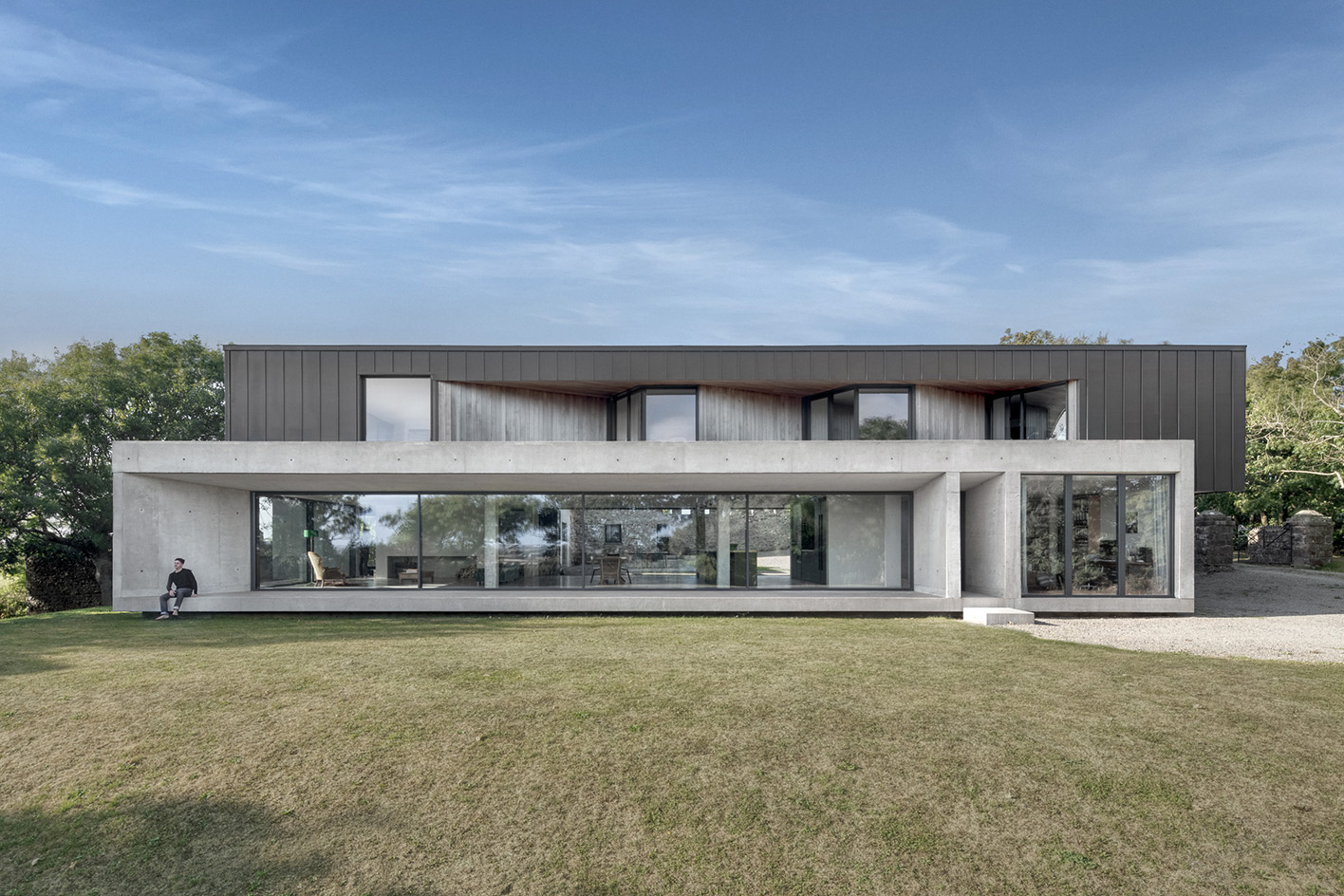 Minimalist architecture: homes that inspire calm
Minimalist architecture: homes that inspire calmThese examples of minimalist architecture place life in the foreground – clutter is demoted; joy promoted
By Ellie Stathaki